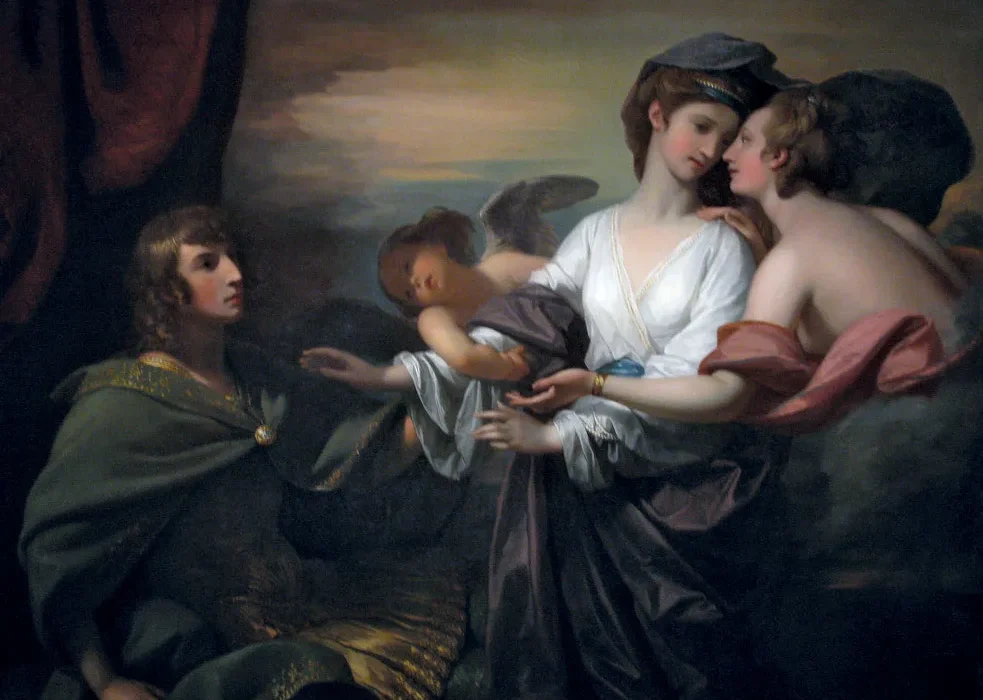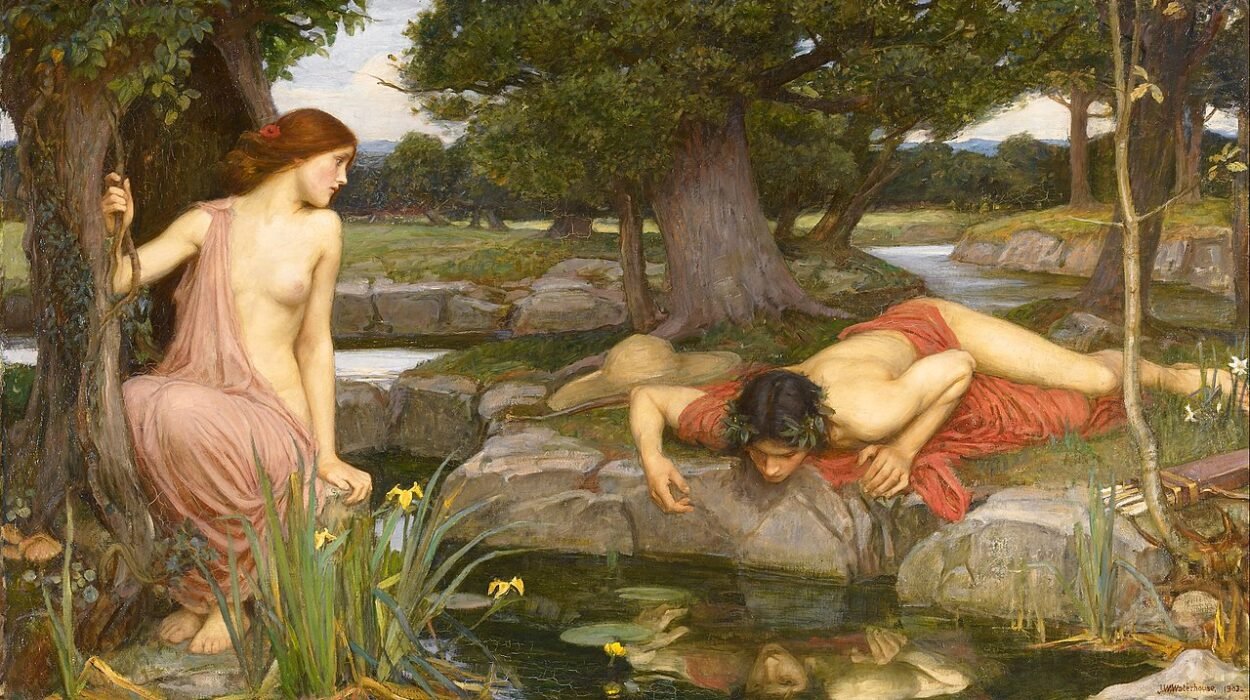Every culture in human history has crafted stories of monsters—beings that inspire awe, fear, and fascination. These creatures serve as mirrors for our imagination, embodying the unknown forces of nature, the fragility of human existence, and the endless creativity of myth. Among the vast menagerie of legendary beasts, one name echoes with particular force across centuries: the Chimera.
The Chimera is no ordinary monster. A creature stitched together from multiple animals, it represents something more than just terror. It is a symbol of chaos, hybridity, and the untamed wilderness. Fire-breathing and formidable, the Chimera has haunted art, literature, and imagination since ancient times, its legend refusing to die. To speak of the Chimera is to enter the world of Greek mythology, where gods, heroes, and monsters collided in tales that still captivate us today.
The Origins of the Chimera
The Chimera first emerges in the ancient stories of the Greeks, particularly in the epic poetry of Homer. In the Iliad, written around the 8th century BCE, Homer briefly but vividly describes the beast:
“She was of divine stock, not of men, in the forepart a lion, in the hinder a serpent, and in the midst a goat, breathing forth in terrible fashion the force of blazing fire.”
This was no mere animal. It was a supernatural creature, born of monstrous lineage and endowed with terrifying power. The Chimera’s very form seemed to defy nature, combining predator and prey, wild and domestic, earth and flame.
But the story of the Chimera goes beyond a frightening beast. Like many figures in Greek mythology, it is deeply tied to a larger tapestry of family, destiny, and the eternal struggle between humans and forces beyond their control.
The Lineage of Monsters
To understand the Chimera, one must first know her family. In Greek myth, she is the offspring of two of the most terrifying beings ever imagined: Typhon and Echidna.
Typhon was a storm-giant of unimaginable scale, a creature so vast and terrible that even Zeus, king of the gods, was nearly defeated in battle against him. Echidna, his mate, was half-woman and half-serpent, dwelling in caves and giving birth to monsters that plagued gods and mortals alike. Together, they produced a brood of horrors that populate Greek mythology: Cerberus, the three-headed guard dog of the Underworld; the Hydra, a serpent with regenerating heads; the Sphinx, who posed deadly riddles; and of course, the Chimera.
This lineage matters, because it shows that the Chimera was not just an isolated nightmare—it was part of a mythological ecosystem of chaos. In Greek cosmology, monsters like the Chimera stood as forces of disorder, constantly threatening the fragile balance of the human world. Heroes existed to confront these beasts, proving their strength, courage, and worth.
The Description of the Beast
The Chimera was not merely strange; it was grotesque in its construction. The earliest sources describe it as part lion, part goat, and part serpent. Most often, it is imagined as a lion’s body, with a goat’s head rising from its back and a serpent forming its tail. From its goat’s mouth—or sometimes from all three mouths—it breathed fire hot enough to melt armor.
The hybrid form itself carried symbolism. The lion represented dominance and raw predatory strength. The goat, often associated with fertility and the wilderness, brought an unsettling contrast, a domestic creature turned monstrous. The serpent was the eternal emblem of danger, cunning, and death. Together, they embodied a creature that was fundamentally unnatural—a violation of order, a living paradox.
The fire-breathing aspect made the Chimera even more terrifying. Fire is both creative and destructive, a gift of the gods and a weapon of ruin. To face a beast that spewed flames was to face not only physical death but also the fury of elemental chaos itself.
The Hero and the Monster
Like most great monsters of Greek mythology, the Chimera did not simply exist to terrify. Its legend is inseparable from the tale of the hero who slew it: Bellerophon.
Bellerophon was a mortal of extraordinary skill, favored by the gods but doomed by hubris. His great quest came when the king of Lycia, seeking to rid his land of the Chimera, commanded him to slay the beast. It was a task designed to be impossible—a death sentence disguised as heroism.
Yet Bellerophon possessed an advantage that no ordinary mortal could claim: the winged horse Pegasus. Born from the blood of the slain Medusa, Pegasus was a creature of divine origin, swift and untouchable. With Pegasus, Bellerophon could fly above the Chimera, striking from the sky where the monster’s flames could not reach.
According to the myth, Bellerophon rained arrows down upon the Chimera, but its fiery breath made a direct assault impossible. In some versions, he drove a spear tipped with lead into the creature’s throat. As the Chimera breathed fire, the lead melted, suffocating it from within. Thus, the monster was slain not only by bravery but also by cunning—a common theme in Greek myths, where intelligence often rivaled strength.
The tale of Bellerophon and the Chimera endures because it embodies the eternal drama of human courage against impossible odds. Yet, as with many myths, the hero’s victory was not without irony. Bellerophon, emboldened by his success, later tried to fly to Mount Olympus itself, seeking to join the gods. For his arrogance, Zeus struck him down, casting him to earth. The lesson was clear: monsters may be slain, but hubris is punished.
The Symbolism of the Chimera
The Chimera’s enduring power lies not just in its monstrous appearance but in its symbolism. It embodies the idea of something unnatural, chaotic, and destructive. It is a creature that should not exist, and yet it does.
In ancient Greek culture, the Chimera symbolized forces that threatened order—wildfires, plagues, invasions. In fact, some historians believe the myth may have been inspired by natural phenomena in the region of Lycia, in modern-day Turkey. This land is home to vents of natural gas that seep from the ground and ignite, creating eternal flames. To ancient eyes, such fiery eruptions could easily be interpreted as the breath of a monster lurking beneath the earth.
On a deeper level, the Chimera represents the fear of boundaries breaking down. By combining multiple animals into one, it violates the natural categories of life. It is a hybrid, a living contradiction, a reminder of the dangers of crossing limits. In this way, the Chimera is not just a mythological beast but a philosophical challenge: what happens when order collapses into chaos?
The Chimera in Art and Culture
From ancient times to today, the Chimera has captured the artistic imagination. Ancient Greek pottery depicts it locked in battle with Bellerophon and Pegasus, frozen in scenes of motion and flame. Sculptures and reliefs show the monster in all its strange glory, often emphasizing its leonine head and fiery breath.
In medieval Europe, the word “chimera” expanded beyond the specific Greek beast to mean any monstrous hybrid. Artists used it to describe grotesque creatures in cathedrals, tapestries, and illuminated manuscripts. It became a symbol of illusion, fantasy, and the unreal.
During the Renaissance and Enlightenment, scholars rediscovered classical myths, and the Chimera returned as a symbol of imagination and creativity. Writers used the word metaphorically to describe fanciful ideas or unattainable dreams. To call something a “chimera” was to suggest it was a beautiful but impossible fantasy.
Even today, the Chimera continues to inspire. It appears in literature, from Dante’s Inferno to modern fantasy novels. It prowls through video games, movies, and comics, often reimagined as a fearsome adversary. The concept of hybridity resonates deeply in an age fascinated by genetic engineering and artificial life.
The Chimera in Science
Interestingly, the Chimera has also found a place in modern science. In biology and genetics, the term “chimera” describes an organism that contains cells from different genetic sources. This can occur naturally, as when two embryos fuse in the womb, or artificially, through genetic engineering.
Scientists have created chimeric organisms for research, blending human and animal cells to study disease or develop treatments. While these experiments push the boundaries of science, they also raise ethical questions. The ancient myth finds new relevance here: when does hybridity become unnatural, even monstrous? When does innovation cross into hubris?
In medicine, too, the concept of the chimera carries weight. Chimerism can result in individuals carrying two sets of DNA, a condition that can complicate diagnoses but also shed light on the mysteries of development. Once again, the myth of the Chimera becomes a metaphor for the blurred lines between categories we assume to be fixed.
The Eternal Flames of Lycia
Archaeological and geological evidence links the Chimera myth to real places. Near the ancient city of Phaselis in Lycia lies Mount Chimaera (modern-day Yanartaş in Turkey). On its rocky slopes, flames burn perpetually from natural methane gas seeping through cracks in the earth.
To the ancients, these unquenchable fires were surely supernatural. They gave rise not only to the Chimera myth but also to religious rituals, where eternal flames symbolized divine presence. Even today, visitors to Yanartaş witness the dancing flames and feel a connection to the legend.
The physical landscape thus breathes life into myth. The Chimera is not just an invention of imagination but also a reflection of the world as the Greeks experienced it—a place where earth, fire, and mystery intertwined.
The Chimera’s Legacy
The Chimera’s endurance across time reveals its power as a cultural symbol. It is more than a monster slain by a hero. It is a metaphor for chaos, hybridity, illusion, and ambition. It warns of dangers that lie beyond boundaries, yet it also invites fascination with the strange and the marvelous.
In our modern world, the Chimera lives on in science, literature, and popular culture. It challenges us to reflect on what it means to combine, to create, and to confront the unknown. In a sense, the Chimera has become part of us—our fears, our dreams, our scientific endeavors.
Just as Bellerophon once faced the fire-breathing beast, we too confront our own chimeras, both real and metaphorical. They may take the form of natural disasters, ethical dilemmas, or the limits of human ambition. The legend endures because it speaks to the eternal struggle between order and chaos, courage and fear, humanity and the monstrous unknown.
Conclusion: The Fire Still Burns
The Chimera may be a creature of ancient myth, but its flame still burns in our imagination. It lives in the eternal fires of Lycia, in the pages of Homer, in the brushstrokes of artists, in the laboratories of scientists, and in the stories we continue to tell.
It is a reminder that monsters are never just monsters. They are symbols, lessons, and mirrors of our own struggles. To face the Chimera is to face the fears that lurk within us and around us. It is to recognize that chaos is always near, but so too is the possibility of courage.
And so, the Chimera remains—part lion, part goat, part serpent, part fire, and entirely eternal.






